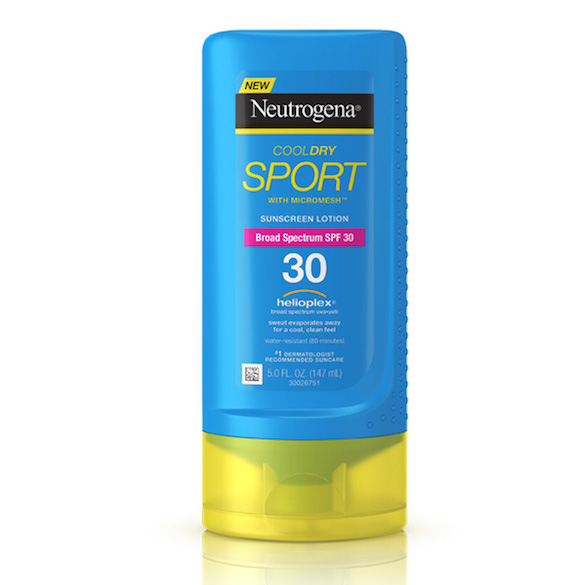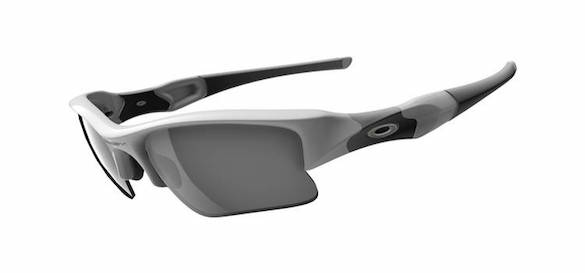Sun Safety Essentials
It’s here! It’s finally, finally here! After what my Nor’easter friends declared the “Longest. Winter. Ever.” the sun is here!
If you’re like me, you want to spend as much time as possible basking in its glorious rays. And why wouldn’t you? Running outside beats the treadmill any day, there’s nothing better than the wind on your face during a long bike ride, and outdoor pools are far more friendly for lap swimming than those dark, claustrophobic indoor caves at the gym.
Exercising outside has a host of benefits: a more intense workout, increased feelings of enjoyment, less stress, and increased levels of vitamin D. But time in the sun can also be risky if you’re not careful — the more time spent in the sun, the higher the risk of skin cancers. A 2006 study, for example, found an increased risk of melanoma in marathon runners.
Staying indoors 24/7 is one option for avoiding sun damage and skin cancer, but it’s certainly not the only option. Besides, we’ve got all winter to stay indoors. With a little bit of planning and a whole lot of safety, you can let the sun shine in on any workout.
UPF Workout Wear
UV Skinz, $20-50: All clothing has sun protection to a certain degree, but the best protection comes from clothing with an Ultraviolet Protection Factor (UPF) rating. Many UPF-friendly clothes are thick and not very breathable, but UV Skinz does a great job of providing workout wear with the highest UPF Rating (50+) in a buttery, breathable, moisture-wicking fabric. Plus, their designs are so stylish you’ll want to wear their clothes everywhere. UV Skinz comes in a variety of lengths and coverage, allowing you to cover as little (or as much) of your skin as your comfort allows.
Active Sunscreens
Neutrogena Cool-Dry Sport, $9.49: A few years ago, the FDA banned the use of “waterproof” and “sweatproof” on sunscreen labels, and for good reason — too many of us slap on sunscreen with a false sense of security, assuming one application will cover us for the whole day. In reality, no sunscreen is truly waterproof or sweatproof. Some stay on your skin longer than others, but as a general rule, it’s good to apply sunscreen 15 to 30 minutes before going outside, then reapply sunscreen every 1 to 2 hours.
When choosing a sunscreen, pick an “active” or “sport” formula, which usually has more staying power than standard sunscreens. They also offer more breathability on your skin, allowing sweat to evaporate instead of clinging to your skin, and are less likely to irritate your eyes when sweat tracks sunscreen into your peepers.
What SPF should you choose? So long as the number is higher than 15, it doesn’t matter. According to the American Melanoma Foundation, an SPF of 15 absorbs 93 percent of harmful ultraviolet rays, while an SPF of 34 absorbs 97 percent. Though SPF numbers certainly get bigger, no sunscreen absorbs 100 percent of rays.
UV-Protective Sunglasses
SportRx, $29.99 and up. Your eyes (yes, your eyes!) can get sunburned. Like sunscreen, a good pair of sunglasses should be worn outdoors year-round. Exposing your eyes to UV damage over a lifetime can cause cancer on the eyelids, cataracts and sunburn on the cornea. To keep your eyes on the up-and-up, experts recommend choosing sunglasses touting “Complete UVA/UVB Protection.” This means the lenses have a protective coating that blocks ultraviolet rays. The coating is clear, so the color of the lenses themselves don’t matter — whether you wear a dark lens or a rose-colored one is completely up to you.
The same goes for swim goggles. If you’re logging laps in the pool, choose eyewear with UV Protection.
Sun Hat
Outdoor Research, $35. Yes, I know, I know: the sun hat isn’t the sexiest thing to wear. But if you’re serious about skin protection, breathable UPF 50+ fabric covering your head, ears and neck can save your scalp — literally. Your scalp, hairline and ears, which typically are neglected when applying sunscreen, are common locations for skin cancer lesions.
Additional Sun Safety Tips
- Try to get your workouts in before 11 a.m. or after 4 p.m., when the sun’s UV rays are not as strong.
- Don’t assume a cloudy day is a good excuse to skip the sunscreen. Up to 80 percent of the sun’s rays can sneak through clouds, fog and rain.
- When possible, choose shaded locations for your outdoor workouts.
- Check your skin for moles, freckles and lesions every month, and schedule a skin cancer screening with a dermatologist every year. Contact your doctor if you notice new moles, changes in color or shape of pre-existing moles, or sores that do not heal.
How are you planning to stay safe in the sun this summer? I (and my dorky-looking sun hat) can’t wait to get outside as much as possible! —Susan

![sun-protection-5850ppp[]](https://fitbottomedgirls.com/wp-content/uploads/2015/06/sun-protection-5850ppp.jpg)



